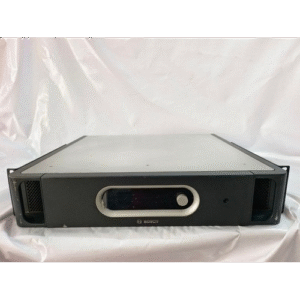- AUTOMATION EQUIPMENT
- ELECTRICAL ITEMS
- AMPLIFIER & UPS
- BATTERY CHARGER & INVERTER
- CIRCUIT BREAKER & BLOCKS
- CONTROL UNIT
- ELECTRIC CONTROLLERS
- FIRE ALARAM SYSTEM
- FUSES & CAPACITOR
- HEADPHONE & SPEAKER
- HMI & DISPLAY
- MISC ELECTRICAL
- PCB
- PLC SYSTEMS
- POWER SUPPLY
- PRINTER & CPU
- RELAY
- SENSORS
- SERVO DRIVES & MOTORS
- TELECOME & COMMUNICATION
- THERMOSTAT
- UNCATEGORIZED
NDC OKI 4401E-OKB photoelectric smoke detector 3312-OKB ANALOG DETECTOR BASE
₹8,764.00
| Product Conditioned | NEW |
|---|
Free Shipping apply to all orders over $199
Guaranteed Money Back in 30 days return.
24/7 Customer Support
Share:
Hotline Order:
(+101) 5620 - 8155
Email ID:
xstore@support.com
The NDC 4401E-OKB is an analog addressable photoelectric smoke detector designed to be installed onto the 3312-OKB analog addressable detector base. This combination forms a critical component of a modern fire alarm system, providing intelligent, location-specific smoke detection.
The “Analog” part means it doesn’t just report “fire” or “no fire”; it communicates a continuous value representing the level of smoke obscuration to the fire alarm control panel (FACP). This allows for advanced features like pre-alarm warnings, maintenance alerts, and compensation for dust and environmental changes.
1. NDC 4401E-OKB Photoelectric Smoke Detector
This is the “brains” and sensing element of the system.
Key Features:
-
Photoelectric Sensing Chamber: Utilizes an optical chamber with an infrared LED and a light sensor. It detects smoke by measuring the light scattered by smoke particles entering the chamber. This method is particularly sensitive to the larger particles produced by smoldering fires (e.g., overheated wiring, burning upholstery).
-
Analog Communication: Sends a continuous value to the control panel, allowing the panel to make intelligent decisions based on rate-of-rise and smoke level thresholds.
-
Addressable: Each detector has a unique address set via the base. This allows the fire alarm panel to identify the exact location (e.g., “Room 205”) of an alarm or fault condition.
-
Stored Value Memory: Retains its analog value even after communication with the panel is lost, which can be retrieved for diagnostics.
-
Automatic Drift Compensation: The detector and panel work together to distinguish between a gradual accumulation of dust and a genuine fire event, reducing nuisance alarms and extending service intervals.
-
Remote Indicator Output: Can drive an optional remote LED indicator, providing a visual alarm signal outside a room (e.g., in a corridor).
-
Twist-Lock Design: Locks securely into the 3312-OKB base with a simple clockwise turn, ensuring proper electrical connection and mechanical stability.
Technical Specifications (Typical):
-
Operating Voltage: 15-32 VDC (provided via the loop from the control panel)
-
Communication: Digital, via the two-wire addressable loop
-
Current Consumption: Low current, typically in standby and alarm modes as specified by the panel.
-
Sensitivity: Pre-calibrated to meet relevant fire alarm standards (e.g., UL 268).
-
Color: White, standard for most commercial detectors.
-
Operating Temperature: -10°C to +55°C (14°F to 131°F)
-
Relative Humidity: 0-93% Non-Condensing
2. 3312-OKB Analog Detector Base
The base is the interface between the detector and the fire alarm loop wiring. It provides power, data communication, and additional functionality.
Key Features:
-
Screw Terminal Connections: Provides secure, field-wiring connections for the two-wire addressable loop (Data In/Data Out), as well as terminals for the optional Remote Indicator.
-
Built-in Address Switch: Features a rotary decimal dial (typically 1-159 or similar) to set the unique device address on the loop.
-
ISO-Mount Compatible: The mounting plate is designed to fit standard 4″ (100mm) electrical back boxes, making installation and replacement straightforward.
-
Relay Output (Optional on some variants): While the “OKB” base is primarily for the remote LED, some variants of the 3312 series may include a Form-C relay that can be activated upon alarm for controlling other equipment (e.g., door holders, HVAC shutdown). It’s important to verify the exact model suffix for this feature.
-
Tamper-Resistant: The detector must be removed to access the wiring terminals, preventing unauthorized tampering.
-
Terminates the Loop: The base is a key component in the physical network of the addressable loop.
We're here when you need us
Get a Quick Quote
Complete our online form.
Call US
Speak to one of our team.
Live Chat
Send us a message
Speak to one of our team.





















